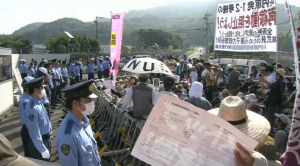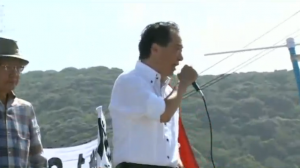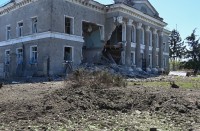
(Reuters) — Japan switched on a nuclear reactor for the first time in nearly two years on Tuesday (August 11) despite strong protests nationwide.
Prime Minister Shinzo Abe seeks to reassure a nervous public that tougher standards mean the sector is now safe after the Fukushima disaster in 2011 but opinion polls show a majority of the public oppose the move after the nuclear crisis triggered by the earthquake and tsunami in March 2011.
Gathered in front of the Sendai nuclear plant in southern Japan, hundreds of protesters gathered at the main gate under the careful watch of the police.

Protesters were led by former Japanese Prime Minister Naoto Kan, who was in power when the meltdowns at the Fukushima Daiichi plant caused a release of radioactive material and forced 160,000 people from their homes, with many never to return, in the worst nuclear disaster since Chernobyl 25 years earlier.
Now he has become the most vocal opponent against nuclear power and Prime Minister Abe.
“Abe’s government is a government that will ruin the nation,” he shouted atop a van in front of the plant.
Protesters said the Japanese government’s reassurance was not reliable.
“Firstly these new standards that the Abe government has got the nuclear regulatory agency to agree upon, have just slightly raised the bar with regards to earthquakes and tsunamis, but in fact they are full of holes,” one protester told local broadcasters.
Recent volcanic and seismic activities in Japan have also raised concerns.
“Currently there are a lot of activities with earthquakes and volcanoes. (The restart) is crazy and completely immoral,” said another protester.
But back in town, 14 kilometers (8.6 miles) from the nuclear plant, residents were divided, according to Japanese media.
“There are a lot of people in this region Sendai that have made their living from the nuclear plant,” said one resident who showed support for the restart of the reactor.
“There is no way of knowing what can happen in the future,” said another who expressed his opposition.
Kyushu Electric Power began the restart of the No. 1 reactor at its Sendai plant at about 0130 GMT on Tuesday, the company said. The reactor will take about 12 hours to go critical and a few days to reach full power, the company has said.
The plant on the west coast of Kyushu island is the furthest away of Japan’s reactors from Tokyo, where protesters regularly gather outside Abe’s official residence to oppose atomic energy.
At nearly 1,000 km (600 miles) from the capital, Sendai is closer to Shanghai or Seoul.







